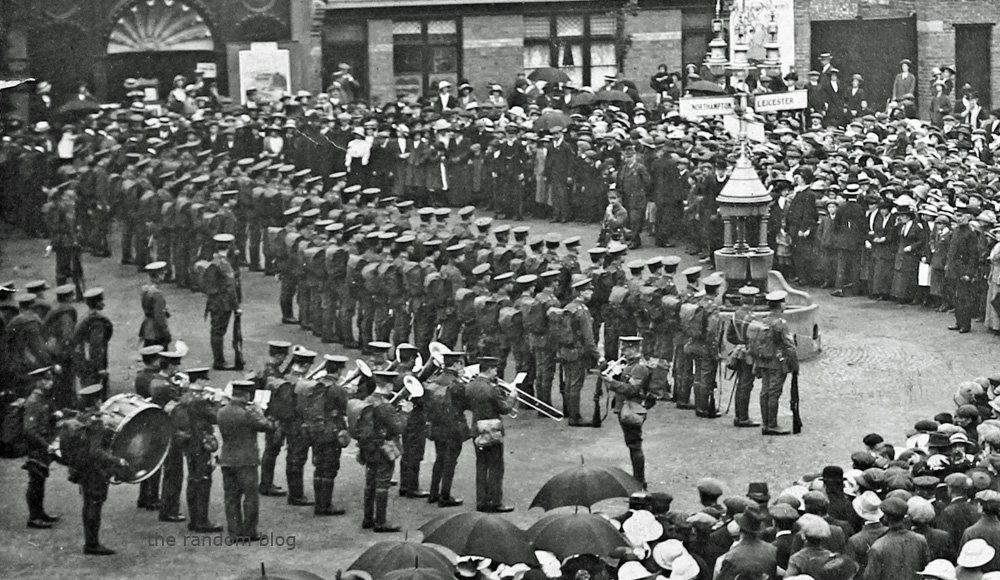
Company E was a small company of part-time territorials from a rural market town in Leicestershire. The men were all friends, neighbours, work mates and siblings who found themselves mobilised for war in 1914. The men became part of the 1st territorial division to be dispatched to France just 6 months after the start of World War One.
Before the outbreak of war
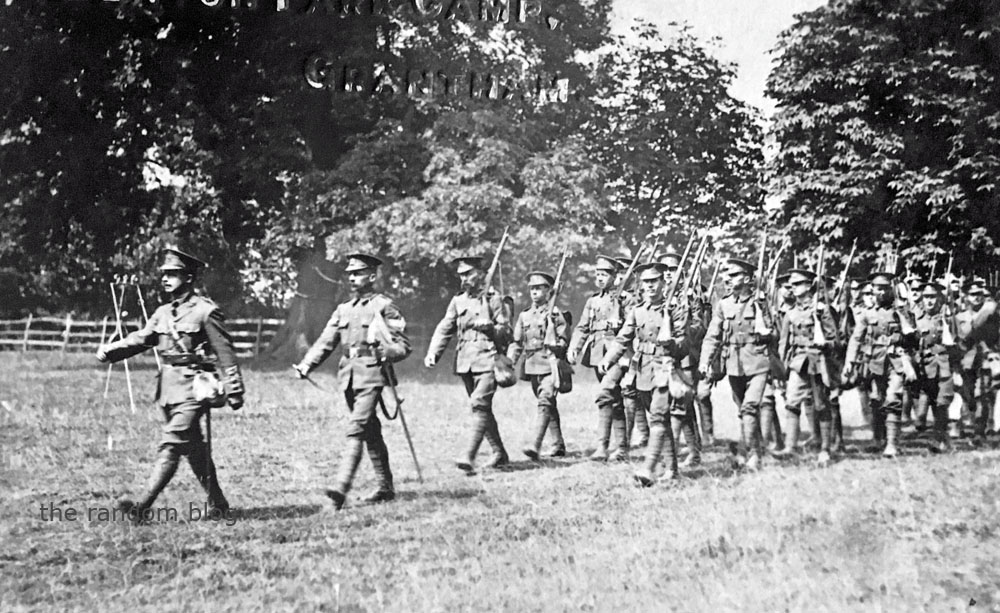
The territorials from Market Harborough in Leicestershire were led by Captain Harold Jeffries, a local solicitor in his father’s practice, and were a mix of reservists, former volunteers and younger recruits with ages ranging from 16 to over 50. Most of them worked together at one of the towns three largest employers: Symingtons corset factory, Harboro rubber factory and the Caxton type foundry. Back then education was not free and most boys left school at 13 going straight into employment at factories and apprentice jobs. Becoming part time soldiers was a welcome change from mundane jobs for many. It was an enjoyable club where they trained or drilled two nights a week learning army discipline and skills, played sport and participated in hotly contested shooting competitions with annual prize giving events. Once a year there was an annual summer camp where they met up with other companies in the regiment.
Outbreak of WW1
In the summer of 1914, the territorials anticipation was mostly confined to the forthcoming summer camp rather than talk of war. It was to be a brigade camp with all of the 138th (Lincoln & Leicester) Brigade in attendance. Company E arrived in Bridlington, West Yorkshire on Sunday 2nd August 1914. The stay was very short – on the bank holiday Monday, 3rd August they were recalled home and arrived back in Market Harborough in the early hours of Tuesday 4th August, the day war was declared. On Weds 5th August, the men received their official notices informing them they had been embodied (called up for war service).
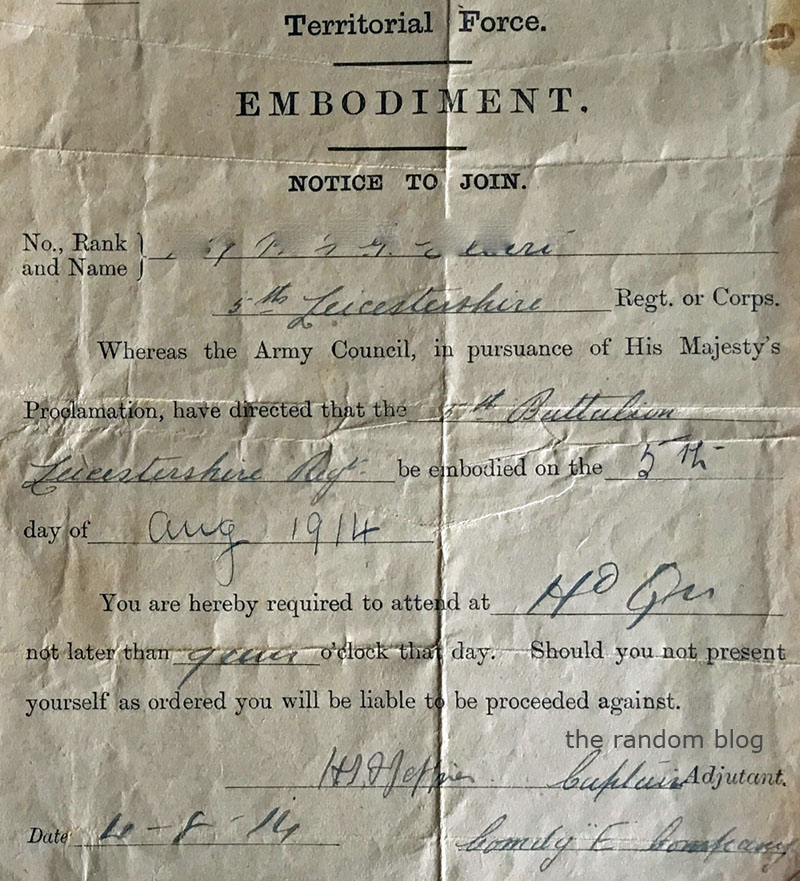
The next day, company E paraded in the square in front of families, friends and neighbours and marched off to join the battalion at Loughborough. The sight of the territorials lined up on the Square prompted more men to “do their duty” and 30 additional volunteers were to join the company in the next few weeks.
War Preparations
At Loughborough the men were paid the territorial force bounty of £5 payable upon embodiment. £5 was a large sum of money to many of the men used to wages of £1 or less per week, most of which went straight into the family coffers. The men who volunteered to serve overseas in the war eventually reached Luton where the whole of the territorial 46th (North Midland) division was stationed.
When the men arrived in Luton expecting to go to France at any moment, they quickly learnt the infantry soldiers lot was to drill, march or wait for orders. The division were to spend 3 months in Luton getting the companies up to full strength with new recruits, equipping the battalions and getting the men physically fit. The territorial force were under scrutiny by military leaders and the division was reviewed by both the King and Lord Kitchener in September 1914.
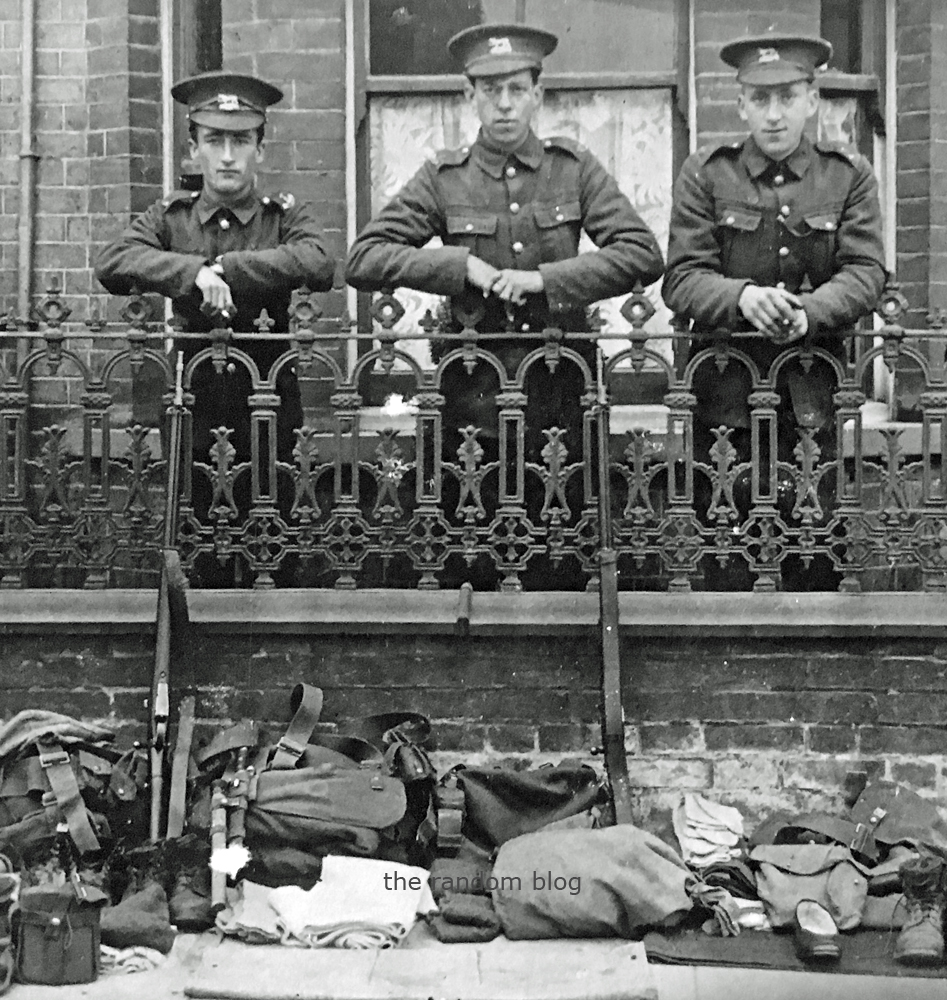
During November the division was split up. Market Harborough company E territorials were merged with Hinckley and became platoon 13 & 14 in Company D of the 1/5th Leicestershire battalion and were dispatched to Le Harve from Southampton. The territorials landed in France on 28th February 1915. The repurposed pleasure steamer SS Atalanta had to take two attempts to get across the channel and the men never forgot the night of sea sickness spent on the ship only to find themselves back in Southampton the next morning.
1915
The territorials were given a first taste of trench life at what was known at that time as the “nursery” trenches near Armentieres nicknamed “plugstreet” before moving to Sailly Sur Lys. They didn’t know it at the time but they were held there in reserve for the battle of Neuve Chapelle in progress. In April 1915 the territorials found themselves in Belgium, located in trench sectors near Kemmel followed by the dreaded Ypres Salient. It was in the Kemmel sector that the first Company E territorial lost his life. Private Harmer died less than 6 weeks after the company had landed in France.
Steel helmets were not introduced in WW1 until mid 1916, so the territorials only had soft trench caps and next to none protection from gas attacks this early in the war. In their first six months at the Western Front the territorials were dispatched to dig or repair trenches, transport supplies and hold territory in the front line trenches. During this period 7 of the territorials died, including the company E CO Captain Jeffries with at least a further 25 wounded. Most of their casualties occurred in the Ypres Salient trenches near sanctuary wood where the British and German lines were very close together with the support lines overlooked by the enemy holding the higher ground.
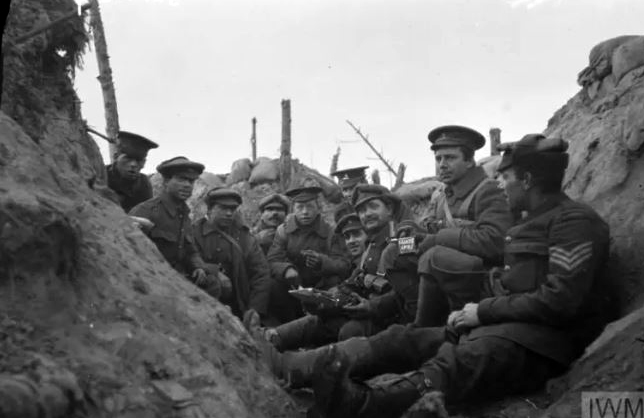
Hohenzollern redoubt
The territorials wounded and hospitalised in England between April and October turned out to be the lucky ones. In the aftermath of the battle of Loos, the 9th division captured the Hohenzollern redoubt, a strategic observation strongpoint, but lost it in a German counter attack. The 9th and 46th (North Midland) division took part in the action to regain it on 13th October 1915. The attack failed to achieve the objectives and the territorial 46th (North Midland) division suffered over 3,500 casualties. The Market Harborough territorials who took part in their first major action escaped lightly in comparison to some companies in the division who were almost completely wiped out, but their participation in the Hohenzollern redoubt action saw Company E’s worst casualties during the war with 4 killed and at least 17 wounded or gassed in 24 hours.
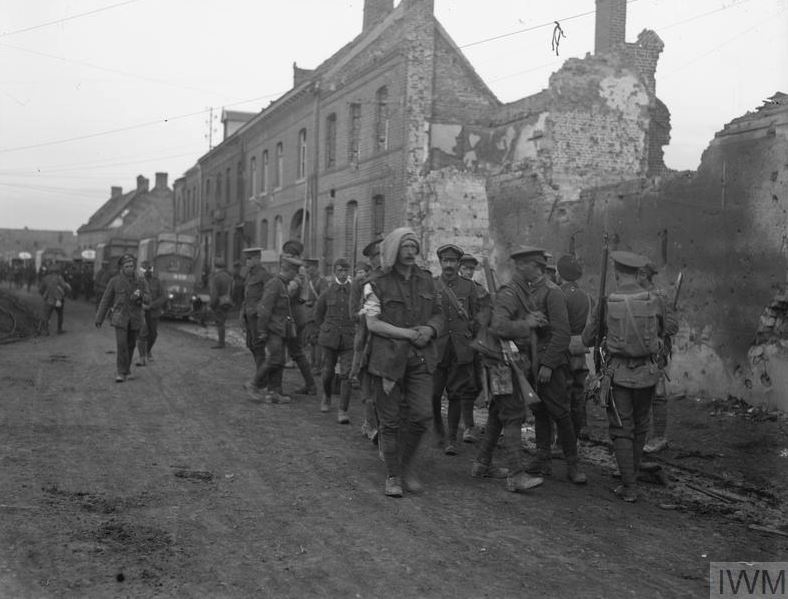
1916
In January 1916, the company were moved to Marseilles having been ordered to Egypt, but the orders were changed at the last minute and the territorials remained on the Western Front. The stay in Marseilles cost another territorial his life in a tragic accident.
In March 1916, the division took over from the French in trenches in a very poor state of repair at Vimy Ridge – later in the war the German high ground was to be recaptured by the Canadians in an infamous WW1 battle. The weather was particularly bad and mining activity on both sides was intense during this period. The territorials were worked hard at Vimy Ridge, constantly sent out to carry out trench repairs in bad conditions.
The Somme Offensive
June 1916 was spent in practice preparation for the Somme offensive. On 1st July, the 46th (North Midland) division and the 56th (1/1st London) divisions mission on the first day of the Somme Offensive was to capture Gommecourt as a diversion to help conceal the main offensive. The Market Harborough territorials were due to be part of the post advancement wave responsible for transporting stores and ammunition and were located in the rear support lines. The advancements across “no mans land” to capture the German positions was carried out by the Sherwood Foresters and Staffordshire regiments with a further attempt carried out later in the day by the 5th Lincolnshire Regiment. The British preparations had alerted the Germans to the forthcoming attack who fortified gun positions which remained intact after the pre-advance bombardment and the smoke screen supposed to disguise the men’s advancement was useless. The attack objectives failed to be achieved with the 46th division suffering 2,300 casualties.
The territorials by the “fates of war” survived to fight another day but had several men wounded and shell shocked during their subsequent efforts to help bring back the wounded and dead. The overall British losses on the first day of the Somme offensive was nearly 20,000 killed, most of them territorials and Kitchener’s “new army”.
1917
The company spent the winter and early part of 1917 in trench sectors to the North and West of Gommecourt, with periods of training taking place, and several football matches. The territorials were keen football players both before and during the war.
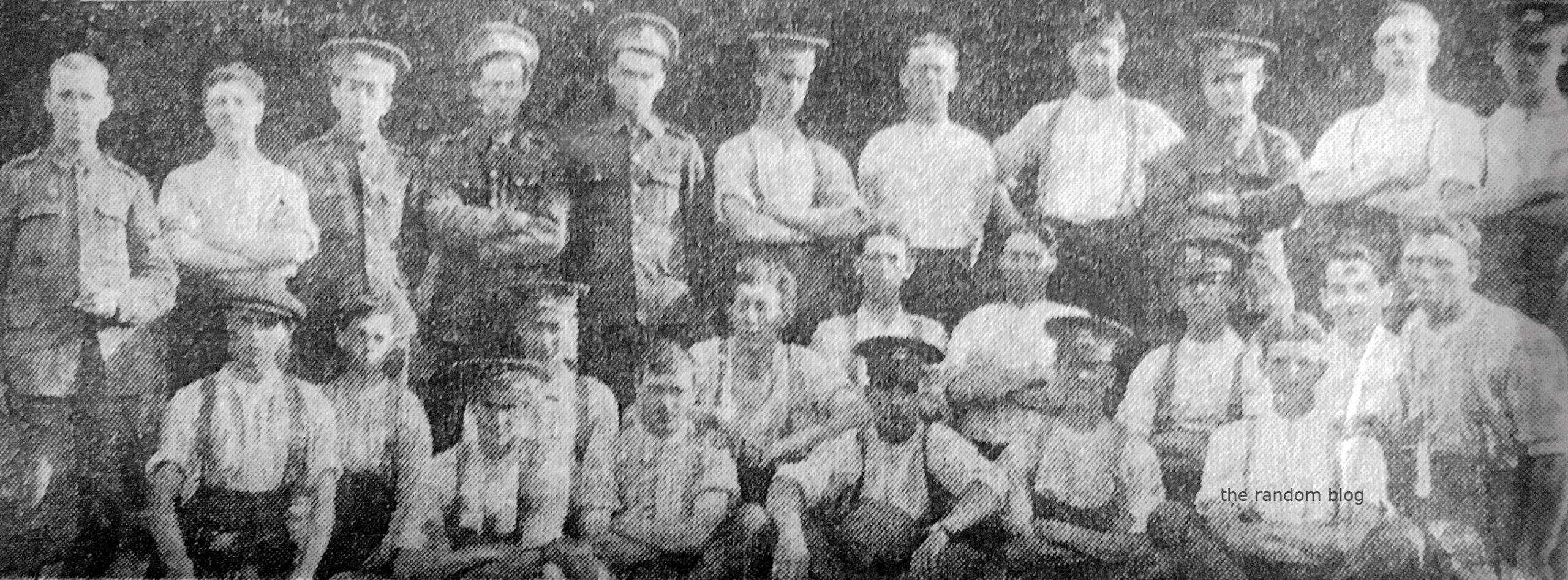
In April 1917 the company were in the Lens area and before the end of the year, 11 of the territorials died. 2 were killed while attached to other Leicestershire battalions and one as the result of a tragic accidental shooting. A further 6 died during engagement in actions around hill 65 and an accidental trench gassing. 2 others were killed during a battalion diversionary raid in the Hulluch sector in August 1917 that resulted in battalion losses of 12 men killed or missing 3 taken prisoner and 51 wounded.
1918
In 1918, the company were back to holding territory in trenches located in St. Elie and Cambrin with various night time opportunistic raids taking place by both the British and Germans during this period with resulting casualties.
At the end of April 1918, the battalion had a major flu outbreak, with over 250 hospitalised during poor weather – the first wave of the Spanish flu pandemic that escalated in the winter of 1918 and went on to kill up to 50 million people world wide.
In September and October 1918, the territorials’ were actively engaged in actions at Pontruet and Riqueval wood during the battle of the St Quentin canal and the final offensives along the Hindenburg line with the loss of a Market Harborough territorial and Sgt Cooper awarded the Distinguished Conduct Medal for gallantry on 11th October 1918. Just 4 days before the Armistice, the company were engaged in an attack on German positions at Sains Du Nord, with the loss of the last Market Harborough territorial to be killed during the war – Private Cyril Bolton.
The men who never came home
Below are the men from company E who died during World War One.
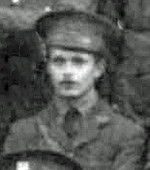
Captain Harold John Fotheringham Jeffries
He was killed on 26/09/1915 aged 32 when leaving the trenches after a front line trench tour at Ypres during the battle of Hooge taking place a short distance away and was posthumously made a Major and is listed in De Ruvigny’s Roll of Honour.
Buried at LIJSSENTHOEK MILITARY CEMETERY West-Vlaanderen, Belgium.
Cemetery/memorial reference: I. A. 23.

Captain John Chapman
He was wounded during a trench tour in the Locre area between 17th & 20th May 1915, He was returned to England where he died in hospital on 30th May 1915 aged 26.
Buried at Leicester Road Cemetery, Loughborough
Commemorated on the Loughborough War Memorial & several other memorials in Loughborough
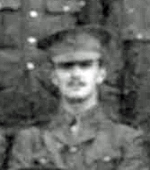
2nd Lieutenant Robert Charles Lawton
He was assigned to company E in June 1914 and was replaced by J D Hills in January/February 1915 due to sickness. Once recovered, he joined the 1/5th battalion at the front in July 1915. Lawton was shot in the stomach in the Hohenzollern Redoubt on October 13th 1915 and died from his wounds a few days later aged 21.
Buried at CHOCQUES MILITARY CEMETERY. Location: Pas de Calais, France
Reference: I. F. 14. Also remembered at St. Margaret’s Church, Main Street Blackfordby.
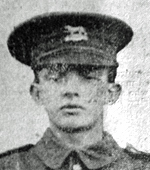
Billings, Gordon
Enlisted: 05/04/1908 Rank: Sergeant Killed: 13/10/1915
Billings worked at Symington’s and was killed aged 25 in the Hohenzollern redoubt. His body was never found and he was subsequently officially assumed dead in 1916.
Commemorated at LOOS MEMORIAL. Location: Pas de Calais, France. This memorial lists 20,000 officers and men with no known grave.
Reference: Panel 42 to 44.
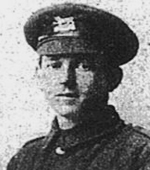
Bolton, Cyril Henry
Enlisted: 1913 Rank: Private Killed: 07/11/1918
Bolton worked at Symington’s and was killed near Sains Du Nord during an attack on the German positions on the Sambe-Oise Canal when an attack and counter attack on a German battery took place during the final days of the war. He was the last man from the company E territorials to be killed just 4 days before the Armistice.
Buried at CROSS ROADS CEMETERY, FONTAINE-AU-BOIS. Location: Nord, France.
reference: III. B. 14
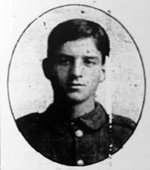
Bromley, Frederick Arthur
Enlisted: 1911 Rank: Private Killed: 16/07/1915
Bromley was a hosiery worker and enlisted in Company E aged 17. He was killed aged 21 while on sentry duty during a trench tour near “Bomb Corner” in the Ypres salient.
Buried at BLAUWEPOORT FARM CEMETERY Location: West-Vlaanderen, Belgium
reference: B 1.
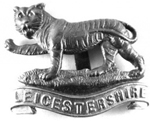
Butteriss, Ralph
Enlisted: Aug 1914 Rank: private, promoted to a Lance Corporal Killed: 17/08/1917
Butteriss was working as a bricklayer and enlisted at the outbreak of war. He was killed aged 31 during a battalion raid carried out in the Hulluch sector that resulted in 5 men killed, 7 missing and a further 51 wounded.
Buried at PHILOSOPHE BRITISH CEMETERY, MAZINGARBE Location: Pas de Calais France
reference: I. U. 48.
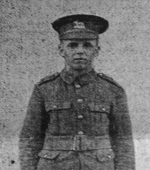
Buswell, Cecil
Enlisted: 1912 Rank: Private Killed: 23/07/1915
In 1911, Cecil and his brother Fred both worked at Symington’s. He enlisted aged about 15 or 16 and was a member of the 1/5th territorial regimental band before the war. Attached to the machine gun corp he was killed in the Ypres salient when the trench was shelled burying a number of the gun section.
Buried at SANCTUARY WOOD CEMETERY Location: West-Vlaanderen, Belgium.
reference: IV. R. 7.
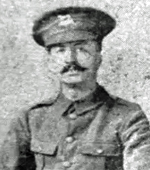
Carter, Alec Charles
Enlisted: 08/08/1914 Rank: Private Killed: 21/06/1917
Carter worked as a corset hand at Symington’s enlisting during the first week of the war. He died aged 33 as a result of an accidental trench gassing when the battalion were fighting near Lens. The trench gassing resulted in 24 deaths and 62 hospitalised.
Buried at NOEUX-LES-MINES COMMUNAL CEMETERY Location: Pas de Calais, France
Cemetery/memorial reference: II. B. 25.
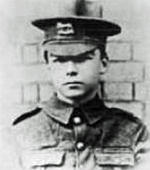
Carroll, Bernard Donagh
Enlisted: 1913 Rank: Private Killed: 10/08/1915
Carroll was a leather worker and he was the eldest son in a family of 7 girls and 4 boys. Shortly after what became known as the liquid fire attack at Hooge, the company were moved to Maple Corpse located in the Ypres salient transporting supplies to the front trenches and over the next week or so were engaged supporting the Hooge counter attack. Carroll was part of a group that ran into a German machine gun near Zouave Wood, wounding 6 of the party. Private Carroll subsequently died of his wounds aged 18.
Buried at LIJSSENTHOEK MILITARY CEMETERY. Location: West-Vlaanderen, Belgium
reference: III. D. 14.
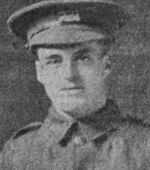
Clapham, Frederick Thomas
Enlisted: Aug 1914 Rank: Lance Corporal Killed: 01/08/1917
Clapham worked at Symington’s. He was wounded in the Hohenzollern Redoubt in Oct 1915 and in Nov 1916 was awarded the military medal. He was killed when his platoon section were patrolling the German lines in the Hulluch right sector.
Commemorated at LOOS MEMORIAL. Location: Pas de Calais, France. This memorial commemorates 20,000 officers and men with no known grave.
reference: Panel 42 to 44.
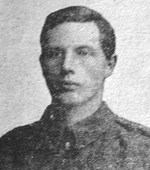
Collier, Fred Voss
Enlisted: Aug 1914 Rank: Lance Corporal Killed: 25/02/1917
Collier worked at Symington’s and was killed aged 28 in the Gommecourt area during a prolonged heavy enemy bombardment.
Buried at FONCQUEVILLERS MILITARY CEMETERY. Location: Pas de Calais, France
reference: III. C. 12.

Cross, David William
Enlisted: 31/08/1914 Rank: Private Died: 23/06/1916
Formally a rubber hand at Harboro rubber co. He suffered 2 bouts of scabies in the field in 1915 and 1916 prior to contracting pneumonia and died in hospital of acute double pneumonia. His brother Private Arthur Cross was killed in action 3 months later in Sept 1916 after being shot in the chest.
Buried at LE TREPORT MILITARY CEMETERY. Location: Seine-Maritime, France.
reference: Plot 2. Row K. Grave 3C.
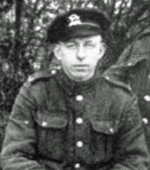
Downes, Ernest Charles
Enlisted: 1913 Rank: Private Died: 13/07/1917
Formerly worked at Symington’s and was the younger of 2 Downes brothers in the company. He died when he was accidentally shot by a comrade who was cleaning his rifle when it went off.
Buried at BRUAY COMMUNAL CEMETERY EXTENSION Location: Pas de Calais, France.
reference: H. 10.
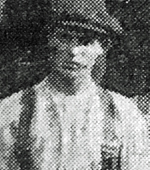
Durant, Robert
Enlisted: Aug 1914 Rank: Private Died: 03/02/1917
Durant worked as a packer factory hand and was wounded in the Hohenzollern Redoubt in Oct 1915 but returned to the front. He died of wounds aged 20 or 21 in 1917 on his way to the frontline Hannescamps trenches when the party came under enemy fire and subsequently died.
Buried at WARLINCOURT HALTE BRITISH CEMETERY, SAULTY Location: Pas de Calais, France
Cemetery/memorial reference: IV. G. 9.
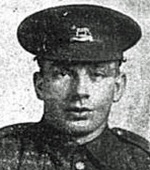
Freeman, Albert Edwin
Enlisted: 05/09/1914 Rank: Corporal Killed: 13/10/1915
Freeman worked at the Great Bowden sewage farm that his father managed and was a bell ringer at his local church. He had previously served in the 1st volunteer Leic battalion for a period of time before his enlistment in company E at the age of 27. He was killed in the Hohenzollern redoubt together with Sgt Billings. His body was never found and he was subsequently assumed dead in 1916.
Commemorated at LOOS MEMORIAL. Location: Pas de Calais, France. This memorial lists 20,000 officers and men with no known grave.
reference: Panel 42 to 44.
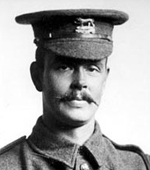
Gore, William John
Enlisted: 1914 Rank: CSM Killed: 08/06/1917
Gore was a fireman and captain of the towns swimming and polo teams. He was killed aged 28 in the company HQ by a shell while the battalion were in the sector near Lens during attacks on hill 65.
Buried at BULLY-GRENAY COMMUNAL CEMETERY, BRITISH EXTENSION. Location: Pas de Calais, France
Cemetery/memorial reference: IV. A. 3.
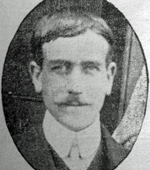
Gregory, John
Enlisted: 04/08/1914 Rank: private Died: 26/01/1916
Gregory worked at the Harboro rubber works. He was wounded on 03/05/1915 and spent a week in the field hospital before returning to duty. He fell between 2 train cars during a return to camp from Marseilles on 13/01/1916. He had his leg removed and died from septicaemia in hospital. The battalion were in Marseilles at the time as a result of orders to move to Egypt but the orders were changed and the battalion remained at the Western Front.
Buried at MAZARGUES WAR CEMETERY, MARSEILLES. Location: Bouches-du-Rhone, France
reference: IV. A. 47.
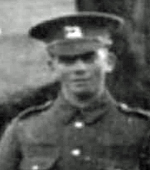
Harmer, William Robert
Enlisted: 18/11/1910 Rank: Private Killed: 07/04/1915
Harmer worked in the co-op. He was 5ft 4 inches and had previously been rejected from the regular army for being “under height”. Harmer had been in company E for 4 years prior to being called up for war and was the first of the territorials to be killed less than six weeks after the battalion landed in France aged 24. He was shot in the head while in the front line trenches at Kemmel and was buried in a cemetery a mile from the trenches. In 1922, his body was exhumed and reburied in the Lindenhoek military cemetery.
Buried at LINDENHOEK CHALET MILITARY CEMETERY. Location: West-Vlaanderen, Belgium.
Cemetery/memorial reference: II. H. 8.
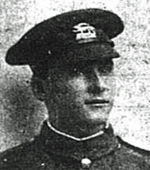
Howard, George C
Enlisted: 1913 Rank: Private Killed: 11/10/1918
Howard worked at the coffee mill. He suffered gas poisoning in Oct 1915 and was killed during the company’s advancement on Riquerval just one month before the Armistice.
Commemorated at VIS-EN-ARTOIS MEMORIAL. Location: Pas de Calais, France. This Memorial commemorates over 9,000 men who died in the period from 8 August 1918 to the date of the Armistice in the Advance to Victory in Picardy and Artois, and who have no known grave.
reference: Panel 5.
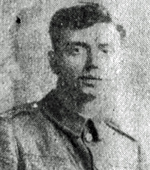
Jennings, Charles Ernest
Enlisted: About 1912 Rank: Private Died: 08/08/1915
He was a member of the parish church choir and worked at Symington’s. He died in France of appendicitis aged 23.
Buried at LE TREPORT MILITARY CEMETERY. Location: Seine-Maritime, France
Cemetery/memorial reference: Plot 1. Row G. Grave 2A
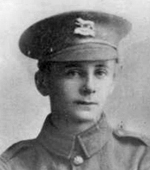
Lord, Sydney V
Enlisted: 1913 Rank: Private Killed: 17/08/1917
Lord was one of 9 children and had been a keen member of company E before the war. He died aged 21 during the company’s participation in a battalion raid carried out in the Hulluch sector that resulted in 5 men killed, 7 missing and a further 51 wounded. Private Butteris was also killed during the raid.
Commemorated at LOOS MEMORIAL. Location: Pas de Calais, France. This memorial commemorates 20,000 officers and men with no known grave
Cemetery/memorial reference: Panel 42 to 44.

Squires, Thomas William
Enlisted: 31/08/1914 Rank: Corporal. Killed: 13/10/1915
Squires was a butcher and enlisted in Market Harborough at the age of 21. He was killed in the Hohenzollern redoubt attack alongside Billings and Freeman. Squires was not officially declared dead until 03/09/1916.
Commemorated at LOOS MEMORIAL. Location: Pas de Calais, France. This memorial commemorates 20,000 officers and soldiers with no known grave.
Cemetery/memorial reference: Panel 42 to 44.
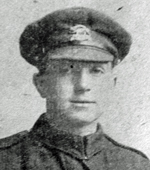
Walker, George Harold
Enlisted: 12/02/1912 Rank: Private Killed: 09/09/1917
Walker worked at Symingtons when he left school and enlisted in Company E aged 15, winning a prize in the company’s shooting competition in 1913. He was killed aged 20 while located in the trenches in St. Elie sector.
Buried at BETHUNE TOWN CEMETERY. Location: Pas de Calais, France
reference: VI. G. 40.
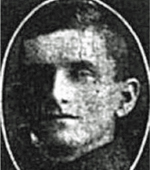
Wilford, Arthur Frederick
Enlisted: about 1913 Rank: private Killed: 29/10/1917
Formally a hosiery worker, he joined company E territorials aged about 16 a few months after his older brother Ernest. He was the youngest of three brothers killed. Arthur was sent home from the front with a nervous breakdown but returned to the front in March 1917 as part of the 7/Leic battalion and was killed 7 months later aged 20. Their mother was listed as a widow in 1911 and was left with only one of her 4 children, a daughter at the end of the war.
Commemorated at TYNE COT MEMORIAL. Location: West-Vlaanderen, Belgium. This memorial commemorates 35,000 men of the British and New Zealand forces who have no known grave and died between August 1917 and November 1918
Cemetery/memorial reference: Panel 50 to 51.
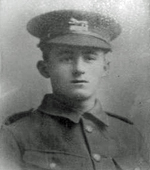
Wilford, Ernest
Enlisted: about 1912/1913 Rank: Private Killed: 15/06/1917
Formally a lift boy at Symingtons Ernest was the eldest of the three Wilford brothers killed. He enlisted in company E about 1912/1913, and won a prize in a company shooting competition in 1913. He was wounded while serving with company E in 1915 and returned to the front, serving with the 6/Leic battalion before being killed aged 23 a few months before his younger brother.
Buried at CROISILLES BRITISH CEMETERY Location: Pas de Calais, France
Cemetery/memorial reference: III. D. 2.
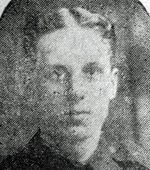
Woodford, George William
Enlisted: 15/02/1912 Rank: Private Killed: 18/11/1916
Woodford worked at Symingtons. He enlisted in company E aged about 17 and was embodied with the rest of company E in August 1914 but was subsequently attached to the 28 provisional battalion at home. In Feb 1916 he was transferred to the 3/5 Leic before then being transferred to the 8th (service) Battalion of the North staffs reg. He was dispatched to the front on 22/08/1916 and was killed aged 20 on 18/11/1916 while serving with the North Staffs regiment during the Battle of Ancre. He was reported as missing and then reported as killed in action 5 months later.
Buried at GRANDCOURT ROAD CEMETERY, GRANDCOURT Location: Somme, France
reference: C. 52.
Lest We Forget
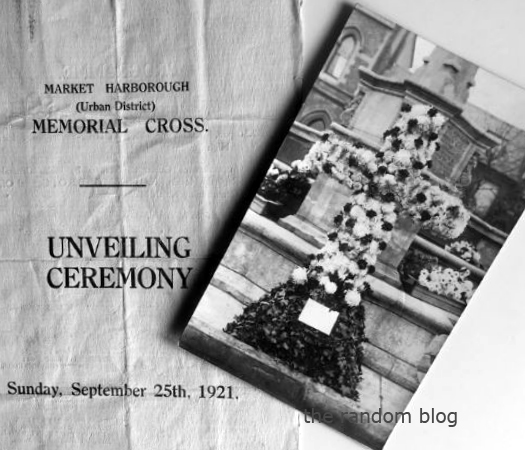
This post remembers 130 territorials who were among the first to volunteer to go to war but nearly 1000 men from just this one town fought in various regiments throughout the course of the war. The same story could be told for countless other towns and villages.
The 254 men from the town who died during the war are remembered on the memorial cross in the square and men from the surrounding villages are remembered at various other memorials.